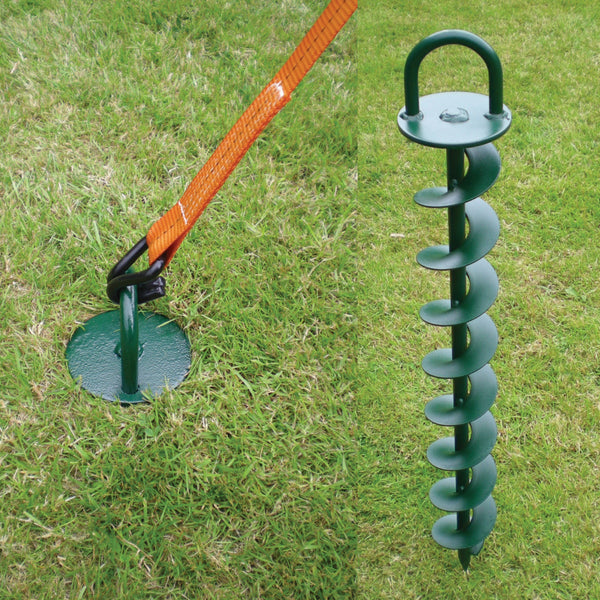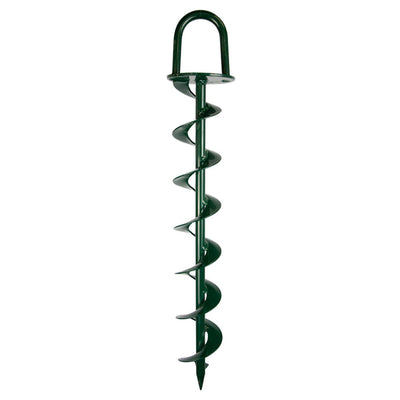How a Ground Anchor Can Boost Protection for Your Equipment
How a Ground Anchor Can Boost Protection for Your Equipment
Blog Article
Discover the Different Kinds Of Ground Anchor for Your Following Job
When starting a construction or landscaping job, understanding the different kinds of ground anchors offered is important to making sure both security and longevity (Ground Anchor). From auger anchors, which master diverse dirt problems, to stake anchors created for short-lived installments, the choices are countless. Additionally, concrete and screw supports present distinct advantages in details scenarios, while deadman supports are tailored for applications needing resistance to lateral forces. The selection of a suitable anchor kind can considerably affect the overall success of your task, prompting further exploration into their respective advantages and applications.

Auger Anchors
Auger supports are a preferred choice in different building and landscape design tasks because of their unique design and effective securing capabilities. These supports contain a helical screw-like shaft that is driven into the ground, enabling a secure and steady hold. The spiral layout facilitates simple installment and makes the most of resistance against side forces, making auger anchors particularly efficient in applications such as secure fencing, temporary frameworks, and disintegration control.
The installation procedure of auger supports is fairly straightforward. Auger supports can be quickly removed and reused, which includes to their cost-effectiveness and sustainability.
One of the significant benefits of auger anchors is their capability to distribute loads equally across the bordering soil, decreasing the risk of dirt disturbance and lessening environmental impact. Furthermore, they are less susceptible to loosening up or heaving gradually compared to typical securing methods. As a result, auger supports are an exceptional choice for tasks needing durable and dependable anchoring solutions.

Risk Anchors
When it comes to protecting structures in a range of outside applications, stake anchors use a trusted and straightforward remedy. These supports are commonly constructed from resilient products such as steel or light weight aluminum, designed to withstand ecological stress and anxieties while giving optimum security. Their basic design permits quick installment, making them a perfect choice for short-term or irreversible anchoring needs.
Stake anchors are especially helpful in safeguarding tents, covers, and other lightweight frameworks against wind and weather. They operate by being driven right into the ground at an angle, creating a solid hold that resists pull-out pressures - Ground Anchor. The effectiveness of risk anchors depends on numerous factors, consisting of soil kind, wetness content, and the angle of setup
For included safety, lots of risk supports include add-on factors for straps or ropes, allowing for stress modifications as necessary. In applications such as landscape design or construction, they can efficiently maintain devices or frameworks on uneven surface. In general, risk supports provide a functional and cost-effective service for protecting different outside installations, making them a favored option for specialists and do it yourself fanatics alike.
Concrete Anchors
Concrete supports supply a durable option for securing structures to concrete surface areas, making certain stability and safety in numerous applications. These anchors are essential for tasks ranging from domestic constructions to large-scale commercial installments. They come in different kinds, including expansion supports, sticky supports, and undercut anchors, each created for certain lots demands and environmental problems.
Glue anchors utilize high-strength epoxy or material to bond the anchor to the concrete, supplying remarkable load-bearing abilities, particularly in fractured concrete circumstances. Undercut anchors produce an one-of-a-kind form within the concrete, providing phenomenal holding power, particularly in applications where tensile loads are common.
Choosing the proper concrete support involves thinking about aspects such as the my website weight of the load, the condition of the concrete, and ecological problems. Correct installation methods are vital to make sure optimum performance and dependability. When performed correctly, concrete supports considerably enhance the architectural honesty of different projects, making them essential Read Full Article in modern-day construction practices. Recognizing the certain needs of your job will certainly assist in picking the ideal kind of concrete anchor for the job.
Screw Anchors

Screw anchors are a functional fastening service that can be efficiently used in a variety of applications where conventional concrete supports might not be sufficient. These supports are composed of a helical style that enables them to be quickly driven into the ground, making them excellent for use in dirt and various other substratums. Their unique framework supplies outstanding holding power and resistance to pull-out forces, making them suitable for many jobs, from landscaping to structural assistance.
Among the main benefits of screw supports is their ease of installment. They need minimal tools and can commonly be set up without the demand for excavation, which conserves both time and labor expenses. In addition, screw anchors can be removed and reused, supplying a sustainable remedy for temporary applications.
Screw supports are specifically helpful in locations where soil problems are testing, such as loose or sandy dirts. Their ability to be set up at differing midsts enables personalization based upon particular job demands. In general, screw supports provide a trustworthy and efficient anchoring approach, making them an outstanding option for service providers and engineers looking for reliable options for their tasks.
Deadman Anchors
Deadman supports function as a robust remedy for stabilizing frameworks in tough conditions, particularly where conventional anchoring approaches dig this might fail. These anchors include huge, heavy items hidden underground, which develop resistance versus side pressures. The layout commonly includes a straight part, such as a block of concrete or a steel plate, buried in the soil, to which cable televisions or bands are attached.
The performance of deadman supports depends on their capacity to distribute loads over a bigger area, decreasing the risk of failing in unpredictable soil conditions. They are particularly helpful in applications such as maintaining wall surfaces, short-lived frameworks, and incline stablizing, where dirt activity can jeopardize the integrity of the framework.
Setup of deadman supports calls for mindful preparation to ensure they are positioned at the right deepness and orientation, maximizing their load-bearing ability. While they may need even more labor and material than light-weight anchors, their integrity in damaging conditions makes them very useful for long-term projects. Moreover, deadman supports are flexible and can be adjusted to various applications, making them a go-to option for designers facing special challenges in their jobs.
Final Thought
Auger anchors stand out in varied dirt conditions, while risk supports suit short-lived applications. For concrete surfaces, growth and sticky anchors supply dependable alternatives, and screw supports offer convenience in challenging surfaces.
In addition, concrete and screw anchors present one-of-a-kind benefits in specific situations, while deadman supports are customized for applications requiring resistance to lateral pressures - Ground Anchor.Auger anchors are a prominent selection in various building and construction and landscaping jobs due to their unique style and efficient securing abilities. They come in various types, consisting of development anchors, sticky anchors, and undercut supports, each made for specific lots needs and ecological problems
Sticky anchors utilize high-strength epoxy or resin to bond the support to the concrete, using premium load-bearing capabilities, specifically in cracked concrete scenarios. Generally, screw supports give a reliable and reputable securing approach, making them an exceptional option for service providers and engineers looking for effective options for their projects.
Report this page